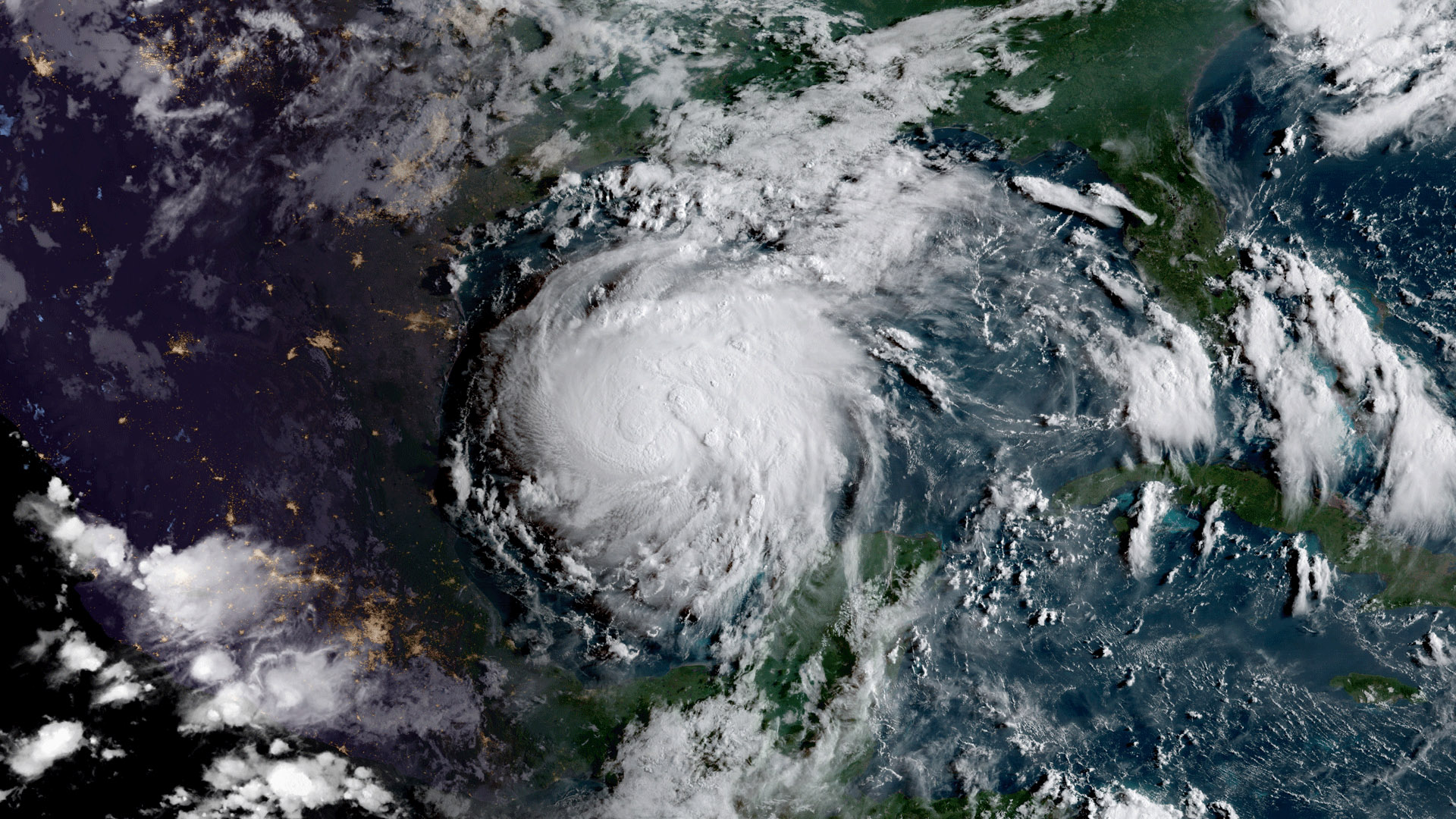Houston << HYOO stuhn >> is a large city in Texas. Houston is also a leading commercial, cultural, and educational center of the Southwest. Houston ranks as the fourth largest city in the United States. Only New York City, Los Angeles, and Chicago have more people.
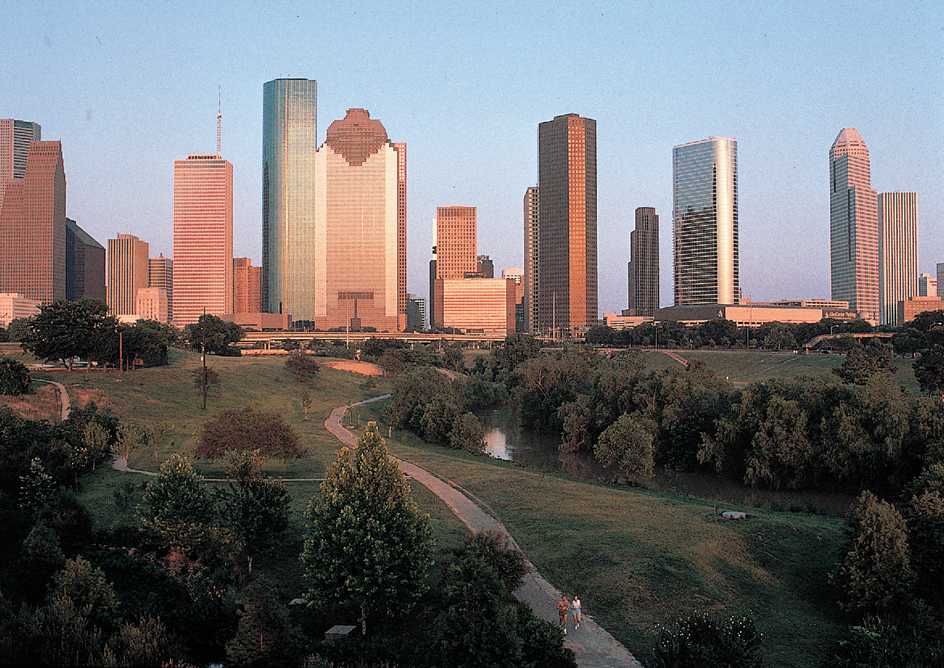
Houston lies in southeast Texas, about 50 miles (80 kilometers) from the Gulf of Mexico. Despite its inland location, Houston is one of the world’s major seaports. The Houston Ship Channel links the city to the Gulf. Ships sail to and from Houston by way of the channel.
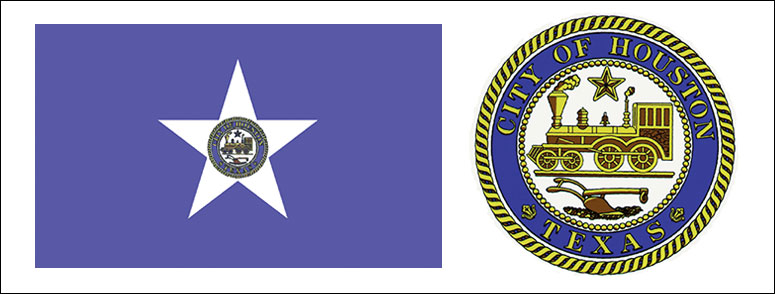
Houston’s economy has traditionally centered on energy in addition to shipping. The Southwest contains rich oil deposits. The Houston area is the nation’s leading oil-refining center. Since the mid-1980’s, Houston has also tried to attract other businesses to decrease its dependence on petroleum-related jobs.
Houston has become famous as the home of the Lyndon B. Johnson Space Center. The center serves as the headquarters for piloted space flight programs of the National Aeronautics and Space Administration (NASA). The Texas Medical Center in Houston is devoted to medical research and education and patient care. It is one of the leading institutions of its kind.
Two real estate promoters, the brothers Augustus C. and John K. Allen, founded Houston in 1836. They named the city for General Sam Houston. General Houston led the army that won Texas’s independence from Mexico that year.
The city
Layout of Houston.
Most of Houston is in Harris County. The city’s borders also cross into Fort Bend and Montgomery counties. Houston rests on primarily flatland. Buffalo Bayou, a stream that flows from west to east, winds past the northern part of downtown. The stream becomes the Houston Ship Channel farther east. The Turning Basin is at the western end of the ship channel. Large ships can turn around in the Turning Basin.
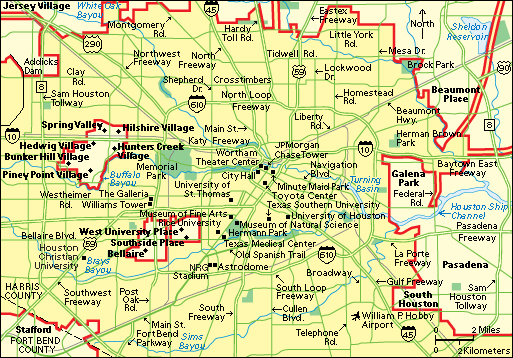
Many modern glass and steel office buildings rise above downtown Houston. The city is home to some of the tallest buildings in the world. he tallest buildings include the 75-story JPMorgan Chase Tower and the 71-story Wells Fargo Bank Plaza.
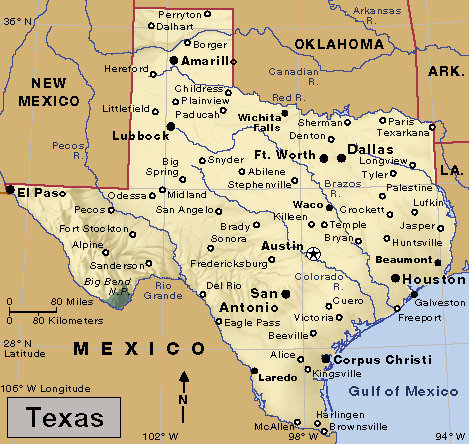
Houston is the seat of Harris County. City and county government offices are in downtown Houston. So are criminal, civil, and federal courts. The theater district is also downtown. It includes the Gus S. Wortham Theater Center and the Jesse H. Jones Hall for the Performing Arts.
An underground network of air-conditioned tunnels connects many of the main buildings downtown. The tunnel system has its own stores and restaurants. Houston summers are hot and humid. The tunnel system enables people to move about the downtown area in comfort.
The Uptown area is an office and retail center about 5 miles (8 kilometers) west of downtown. It includes the 64-story Williams Tower. Uptown also has the Galleria, a 45-acre (18-hectare) indoor shopping mall and business complex. The Galleria features fashionable stores, hotels, and offices. It also has an ice-skating rink that is open the year around.
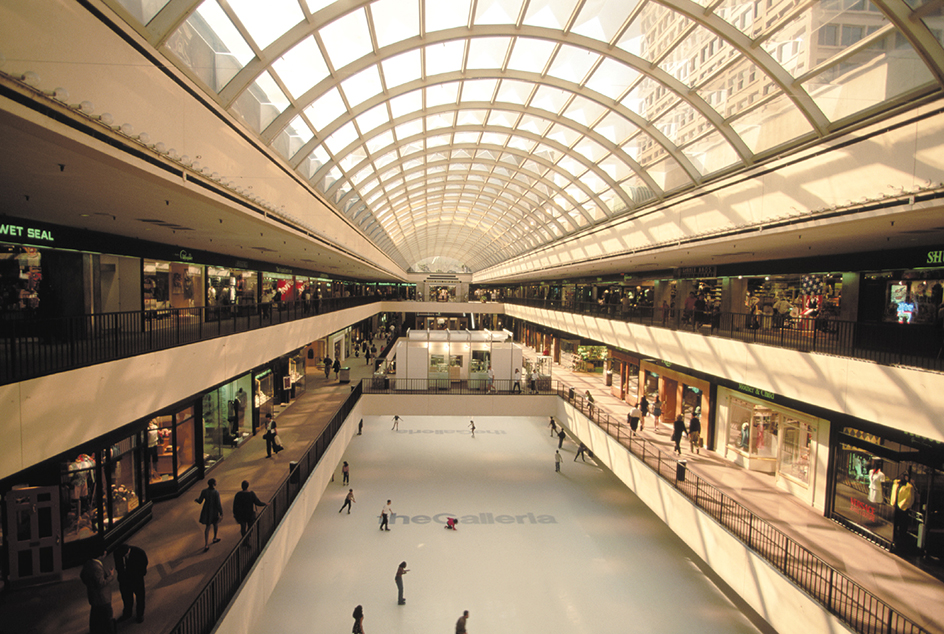
Residential communities extend in all directions from the city’s downtown. Several of Houston’s oldest neighborhoods are in the city’s First through Sixth wards. Numerous residential areas were developed through the years as the city expanded. In addition, several master-planned communities have been built along the city’s edges. These modern residential neighborhoods were designed to include housing, shopping areas, schools, and offices. In many cases, they also have such recreational facilities as golf courses and swimming pools.
Landmarks.
The Astrodome, completed in 1965, was the world’s first baseball and football stadium completely covered by a roof. The stadium is part of a complex that also includes an exhibition and convention hall, an arena, and a professional football stadium. In 2008, the city of Houston closed the Astrodome because of fire code violations. In 2017, the Astrodome was designated a State Antiquities Landmark, protecting it from demolition.
The Johnson Space Center, in southeastern Houston, is home to NASA’s Mission Control Center. Mission Control directs all U.S. piloted space flights after launch. The center serves as the training headquarters for the nation’s astronaut corps. A visitor’s center called Space Center Houston is next to the NASA complex. It includes spacecraft from past missions. It also has exhibits and films dealing with the U.S. space program. 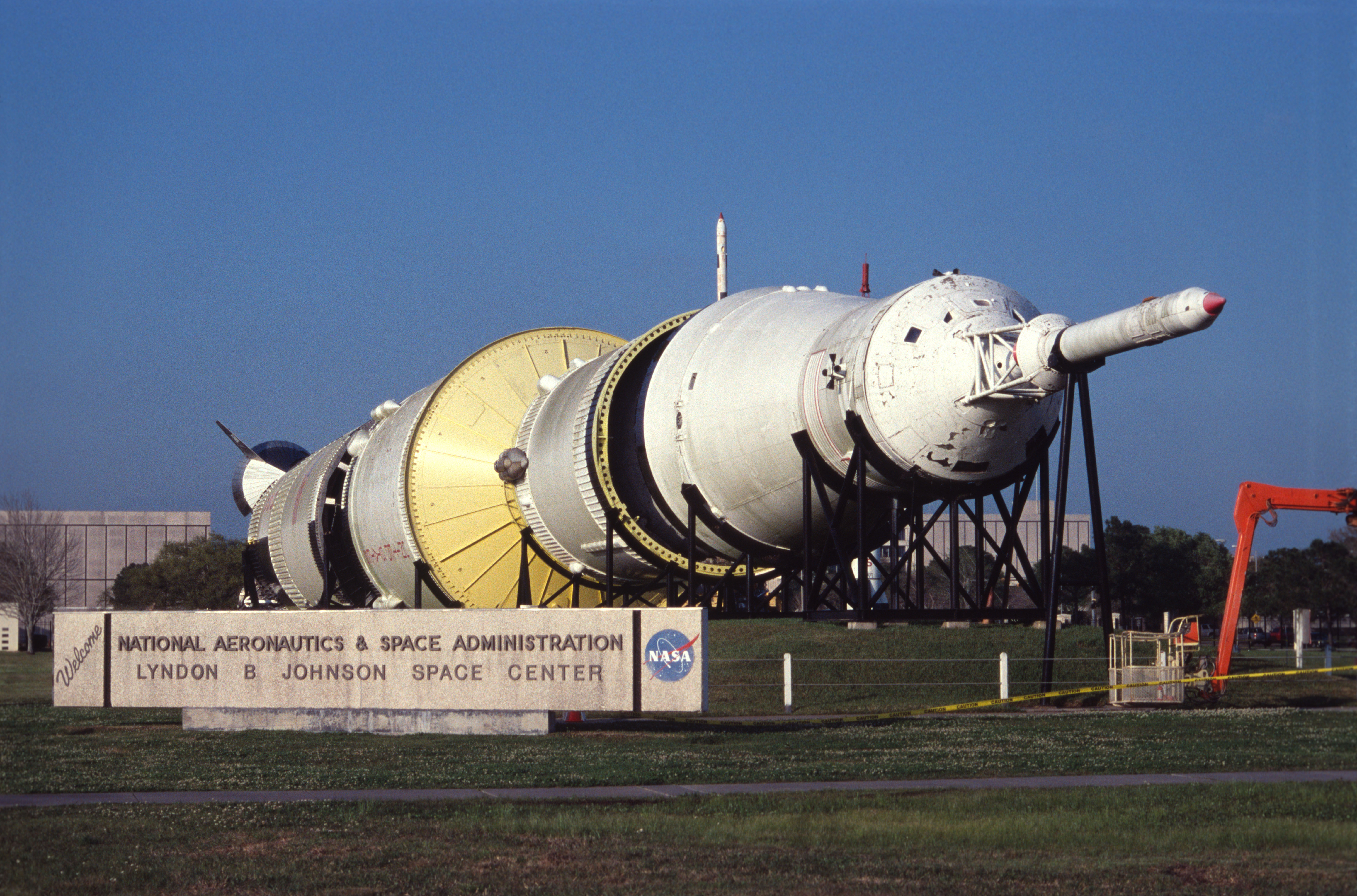
San Jacinto Battleground State Historic Site lies about 20 miles (32 kilometers) east of downtown. It marks the site where Texas won its independence from Mexico in 1836. The San Jacinto Monument towers 570 feet (174 meters) above the battleground. The park also includes a regional history museum.
Metropolitan Houston.
The Houston-Pasadena-The Woodlands metropolitan area consists of 10 counties. They are Austin, Brazoria, Chambers, Fort Bend, Galveston, Harris, Liberty, Montgomery, San Jacinto, and Waller counties. Ten communities, each with its own government, lie within Houston’s city limits. They are Bellaire, Bunker Hill Village, Hedwig Village, Hilshire Village, Humble, Hunters Creek Village, Piney Point Village, Southside Place, Spring Valley, and West University Place.
Cities surrounding Houston include Baytown, League City, Missouri City, Pasadena, and Sugar Land. Galveston, a seaport and tourist center, lies about 45 miles (72 kilometers) from Houston on the Gulf coast.
People
Ethnic groups.
People from more than 100 ethnic groups and cultures live in Houston. White people make up about 35 percent of the city’s residents, and Black people account for about 25 percent. The remaining 40 percent consist of people of Native American, Asian, or other ancestry.
People of Hispanic descent make up about 45 percent of the city’s population. Most Hispanic Americans are of European ancestry, but others have African or mixed ancestry. Houston’s population also includes many people of English, French, German, Irish, or Italian descent.
Housing.
In general, Houston’s housing is newer than that of most other big cities. Master-planned communities, such as Kingwood, lie on the city’s outskirts.
Some of Houston’s oldest Hispanic neighborhoods are in the Harris-Navigation area. Navigation Boulevard runs along the southern bank of Buffalo Bayou between downtown Houston and a street called Harrisburg to the east. Acres Homes, in northwest Houston, has a large Black population. The Sharpstown-Alief area and other southwest sections of the city have many people of Asian ancestry.
The Houston Heights neighborhood lies north of downtown. Houston Heights is noted for its many well-preserved homes from the late 1800’s and the early 1900’s. The Montrose area lies on the southern edge of downtown. It features elegant old mansions, bungalows, and some of Houston’s top nightclubs and restaurants. Some of the wealthiest neighborhoods lie west of downtown. The most luxurious residential area is River Oaks. Mansions line its main street, River Oaks Boulevard. The Memorial and Tanglewood areas are also known for their lovely homes.
Houston, like other large cities, has areas of older, rundown buildings. The area east of downtown is an example.
Education.
The Houston Independent School District (HISD) is the largest school district in Texas. The Texas Education Agency took control of the HISD from its elected Board of Education in 2023. The agency, which supervises the state’s public school systems, cited low academic scores and allegations of misconduct by school trustees as reasons for the takeover. The Houston area also has numerous private and church-supported schools.
Rice University and the University of Houston are among the city’s best-known institutions of higher learning. Other schools of higher education include Houston Christian University, Texas Southern University, and the University of St. Thomas.
The Texas Medical Center includes the Baylor College of Medicine, the Texas Woman’s University Institute of Health Sciences-Houston Center, and the University of Texas Health Science Center. The University of Texas M. D. Anderson Cancer Center is based in the medical center. M. D. Anderson ranks as one of the world’s leading cancer treatment and research institutions.
Social problems
of Houston are similar to those of other large and rapidly growing urban areas. Gang activities are a problem in many neighborhoods.
Traffic jams are common on area expressways. Air pollution is a problem. Much of the pollution results from emissions from automobiles and trucks. Petrochemical and refinery plants along the Houston Ship Channel also pollute the air.
Houston’s lack of zoning regulations has also led to problems for some of the city’s residents. Zoning regulations control the use of land. They divide a city into areas for commercial, industrial, residential, and other developments. Many of Houston’s real estate developers and other business leaders long fought such restrictions. They argued that the lack of zoning regulations encouraged Houston’s economic growth over the years. Without such restrictions, however, Houston grew in a random manner. Many commercial operations moved into residential areas. A number of neighborhood groups protested this situation. In 1991, the City Council named a commission to develop a zoning plan to give the city more orderly growth. The commission proposed a plan to city leaders in 1993. But a community vote that same year defeated the plan.
Cultural life
The arts.
The Houston Grand Opera and the Houston Ballet perform at the magnificent Gus S. Wortham Theater Center in the downtown theater district. The Jesse H. Jones Hall is the home of the Houston Symphony. Founded in 1913, this orchestra is the oldest performing arts organization in Texas. Houston’s nationally known Alley Theatre company, established in 1947, is one of the oldest resident theater groups in the United States.
Museums and libraries.
The Museum of Fine Arts, Houston became the first art museum in Texas when it was founded in 1900. It has a collection of tens of thousands of works. They include art from Europe, Africa, the Americas, East Asia, and the Pacific Islands. The Bayou Bend Collection and Gardens is a branch of the Museum of Fine Arts. It features American decorative arts, such as ceramics, furniture, and textiles. The Contemporary Arts Museum, founded in 1948, exhibits works by contemporary artists.
The Children’s Museum of Houston gives children many learning opportunities. They can engage in art projects or participate in hands-on exhibits on cultural and scientific subjects. The Houston Museum of Natural Science is known for its collection of gems and minerals. The museum also includes the Burke Baker Planetarium and a theater that shows films on a screen six stories tall.
The Houston Public Library system consists of a main library and branch libraries throughout the city. The system owns millions of volumes.
Recreation.
Houston has hundreds of parks. Memorial Park is one of the city’s best known parks. It features a golf course, tennis courts, and jogging trails. A system of parks and trails links bayou areas throughout the city. The Houston Arboretum & Nature Center is also in Memorial Park. Hermann Park includes the Houston Zoo and the Miller Outdoor Theatre. The Houston Symphony gives several concerts at the outdoor theater in the summer.
The city’s professional sports teams include the Houston Astros baseball team of the American League, the Houston Dynamo FC of Major League Soccer, and the Houston Rockets of the National Basketball Association. The city is also the home of the Houston Texans of the National Football League.
The annual Houston Livestock Show and Rodeo is the largest event of its kind in the nation. Among its attractions are performances by country music stars and other famous entertainers. Established in 1932, the event raises money for scholarships for area children.
Economy
Through the years, Houston has seen its fortunes rise and fall with the price of oil. For example, the city boomed from 1973 to 1981, when energy prices soared. But falling oil prices from the early to middle 1980’s hurt the city’s economy. From 1982 to 1986, the Houston area lost about 221,900 jobs—nearly 15 percent of its employment opportunities.
Houston’s economy recovered in the 1990’s. The city’s role as a supplier of energy to the nation continues. Foreign trade through the Houston Ship Channel has increased. The Texas Medical Center provides many jobs. Technology companies also provide employment for many Houstonians. Construction, retail trade, and finance are also important to the economy.
Manufacturing.
Many of the world’s largest oil companies have major operations in Houston. The Houston and southeast Texas Gulf Coast area is the largest oil-refining center in the nation. Houston also ranks as the leading U.S. manufacturer of petroleum equipment.
The Houston area produces huge quantities of petrochemicals. Petrochemicals are chemicals made from crude oil or natural gas, such as benzene and ethylene. Houston manufactures high-technology equipment for use in medicine and the space program. Other important industries in the Houston area produce food products, machinery, fabricated metals, paper and paper products, textiles, and transportation equipment.
Transportation and communication.
Houston is a major transportation hub of the Southwest. Ships carry cargo between the busy Port of Houston and other seaports. Houston has two major airports. They are George Bush Intercontinental Airport and the smaller William P. Hobby Airport. Passenger trains, rail freight lines, and truck lines serve the city. Freeways loop around downtown and link the city with its suburbs. The city has one general daily newspaper, the Houston Chronicle.
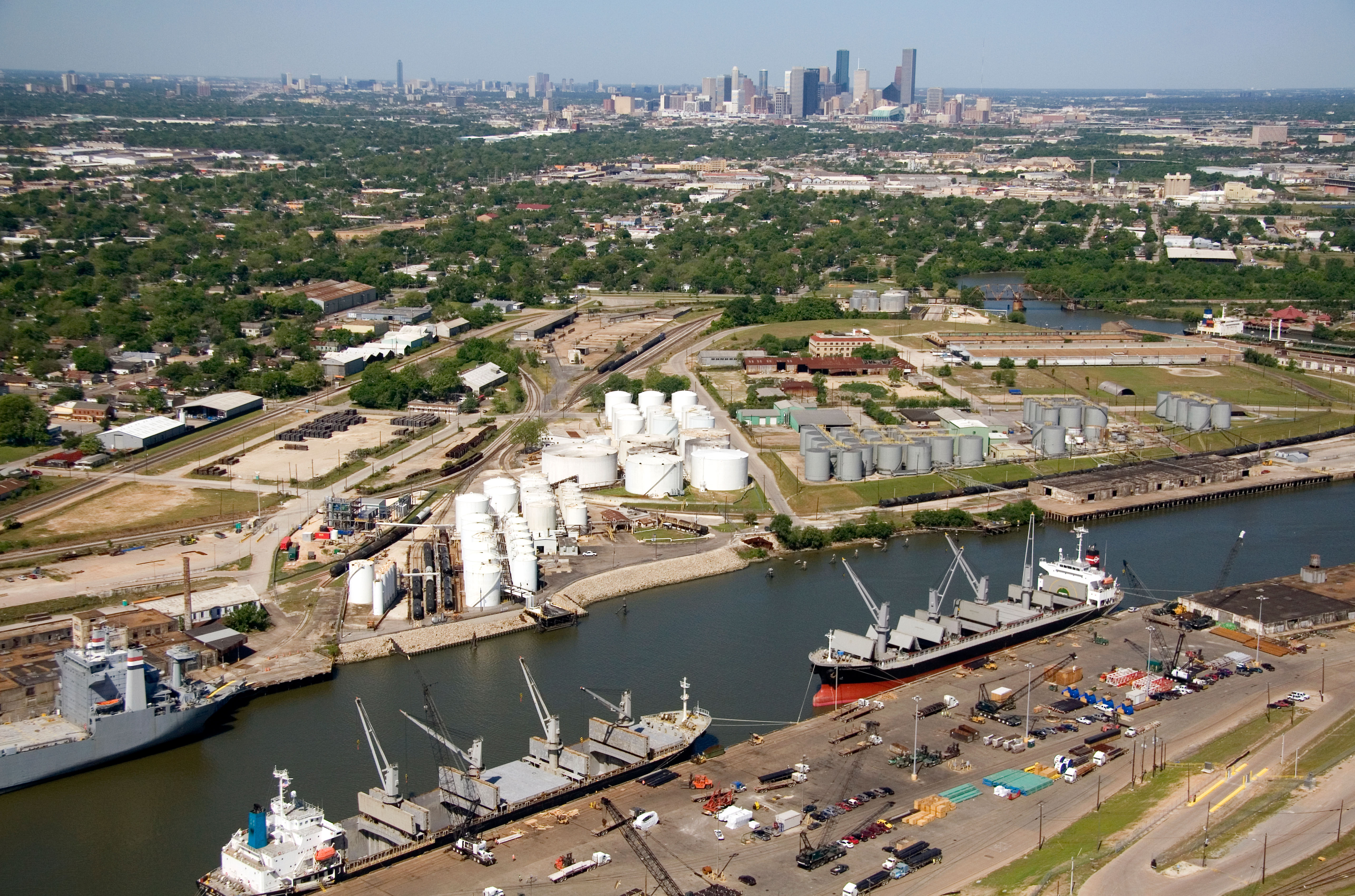
Government
Houston has a mayor-council form of government. Voters elect the mayor and council members to four-year terms. The mayor serves as the city’s chief executive and presides over City Council meetings as a voting member. Voters also elect an official called the controller. The controller acts as the city’s chief financial officer. Houston gets most of its tax revenue from property and sales taxes.
History
Early settlement.
Before white settlers arrived, the Karankawa people lived along the Gulf coast near what is now Houston. In 1836, two brothers, Augustus C. and John K. Allen, founded Houston. In 1837, the city was incorporated. It became the capital of the Republic of Texas.
Commercial city.
Houston’s role as the capital of Texas helped the city grow. But in 1839, Austin became the capital. Houston then turned to shipping and commerce for its livelihood. The Port of Houston was established on Buffalo Bayou in 1841. Buffalo Bayou was too narrow and shallow for oceangoing ships. But barges and small steamboats carried cargo on the stream between Houston and the ocean port of Galveston. By 1850, Houston had 2,396 people. Railroads built during the 1850’s linked Houston with other parts of Texas.
Several epidemics of yellow fever struck Houston in the mid-1800’s. Nevertheless, the city’s population rose to 9,332 by 1870. Houston’s economy was aided by a huge surge in cotton production in Texas between 1870 and 1890. The city’s location and transportation facilities helped it become a leading market for cotton. Houston also provided a market for other agricultural products.
During the late 1800’s, workers began widening and deepening Buffalo Bayou. The changes turned Buffalo Bayou into the Houston Ship Channel. In the early 1900’s, city officials used federal and city funds to continue the project. In 1914, the Houston Ship Channel opened.
Population growth.
By 1900, the population of Houston reached 44,633. The discovery of oil in east Texas in the early 1900’s accelerated Houston’s growth. With its transportation network in place, Houston became a major distribution center for oil in the United States. By 1930, Houston had become the largest city in Texas. It had a population of 292,352.
Rapid industrial expansion during and after World War II (1939-1945) brought thousands of new residents to Houston. The city’s population soared from 384,514 in 1940 to 938,219 in 1960. During this period, Houston jumped from 21st to 7th in population among U.S. cities.
In 1964, NASA’s space center in Houston became the headquarters for the U.S. piloted space program. In 1969, the center’s Mission Control directed the first landing of astronauts on the moon.
Houston’s oil boom between 1973 and the early 1980’s brought economic prosperity and further growth. By 1980, Houston had become the fifth largest city in the United States.
During the 1980’s, the city plunged into an economic recession brought on by a decline in oil prices. City leaders worked to bring greater variety to the economy to make Houston less dependent on oil. The economy improved during the 1990’s. By 1990, Houston had become the fourth largest city in the United States. In 1997, Lee P. Brown was elected Houston’s first African American mayor.
The early 2000’s.
Mayor Brown served until 2004, after winning reelection twice. A light-rail system began service in early 2004 between downtown Houston and the sports and convention complex southwest of downtown.
In 2008, residents of southern Houston were forced to evacuate to escape Hurricane Ike. The hurricane caused flooding and billions of dollars in property damage.
Houston voters elected Annise Parker mayor in December 2009. She served from 2010 to 2016. Parker was the first openly gay woman to serve as mayor of a major American city.
In 2017, Hurricane Harvey struck southeastern Texas. The storm caused severe flooding, major property damage, and widespread power outages in Houston and other communities across the region. 